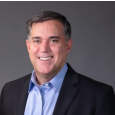To begin with, given your operations, how central is efficiency to the green transition? Could efficiency in energy, materials, and processes be the key factor we’ve been overlooking in confronting sustainability challenges?
Absolutely, efficiency is crucial in addressing sustainability, not only from a carbon reduction perspective but also in terms of input material savings. Many think there's a "big bang" solution to sustainability, where you just flip a switch and everything becomes sustainable. However, at Schaeffler, we’re an engineering company that approaches sustainability by creating thousands of engineered solutions to meet sustainability challenges. Efficiency projects are not only about reducing carbon but also saving costs, which is vital for long-term sustainability. We believe that companies that can integrate efficiency into their sustainability initiatives will be the ones that succeed in the long run.
You’ve recently installed a high-efficiency HVAC system as part of your sustainability efforts. Could you elaborate on how this fits into your wider strategy?
Our sustainability program is broken down into different subgroups, and Scope One emissions fall under our sustainable production team. We reviewed every carbon-producing technology in our plants, identifying the sources of emissions, which for us primarily meant natural gas. By analyzing these processes, we found ways to optimize and reduce natural gas usage.
In our Stratford Aerospace location, we partnered with Ameresco, Inc. to replace an outdated, inefficient HVAC system and chiller with a state-of-the-art system. This change resulted in reducing our carbon footprint by more than 400 tons and our electricity consumption by over 800,000 kilowatt-hours.
It’s a prime example of how we aim to achieve efficiency in carbon reduction and cost savings. We believe that companies that drive resources efficiency will ultimately be more competitive.
You mentioned sustainability has a premium cost. How do you see this evolving, particularly in terms of recycling, minimizing waste, and material efficiency?
At Schaeffler, we integrate sustainability goals, like energy, waste, and water reduction, into our operational KPIs, just as we do with quality, cost, or delivery targets. We set targets for each location to continuously improve and incorporate these goals into our shop floor management systems, making sustainability part of our daily operations.
We’ve taken it a step further by engaging our employees in initiatives like Climate Action Day and an ideas management program that rewards staff for proposing energy efficiency and waste, water and accident reduction measures. This approach fosters a culture of continuous improvement and innovation, which is crucial for achieving both sustainability and economic efficiency.
The automotive industry faces challenges, particularly with electric vehicles (EVs) that still have a significant carbon footprint. How do you view the industry’s biggest challenges today?
It’s a balancing act. The growth of the electric vehicle market will push the transition toward sustainable energy infrastructure. As the EV market expands, there will be increased pressure on the energy infrastructure to shift to more sustainable sources of electricity. However, the transition can’t happen overnight—there’s no "magic wand" that can instantly electrify all vehicles and provide sustainable energy for them.
From your experience, are there areas where current policies or approaches to sustainability could be improved?
One example is the pricing policies for electricity in some of the states where we operate. The lack of peak demand pricing can lead to overinvestment in grid infrastructure. If there were more incentives for reducing consumption during peak times—such as through the use of battery technology—it could alleviate grid capacity issues and support the transition to a cleaner overall grid. By encouraging peak pricing, companies could install battery technology, reduce consumption during high-demand times, and contribute to a more efficient and sustainable energy system.
Reflecting on your 27 years at Schaeffler, what do you think the company has done particularly well in terms of sustainability?
One initiative I'm particularly proud of is our material consumption reduction program. We use around 220,000 tons of flat steel per year, and we conducted an in-depth analysis of every product that uses flat steel to determine the ratio of input material to the end product. We identified opportunities where efficiency could be improved, which led to projects where we redesigned tooling and strip widths to use steel more efficiently.
Last year, this initiative saved around 1.5% of our total material consumption, and we see a clear path to save more than 5% by 2030. This not only reduces costs but also decreases our carbon footprint, making it a true "home run philosophy."
How do you build trust with consumers, especially considering past challenges in the automotive industry, such as the Volkswagen emissions scandal?
For me, the key is showing continuous improvement rather than presenting a "big bang" solution. Carbon footprint calculations can be complicated and sometimes hard to grasp, but elements like water and waste reduction are more tangible. Demonstrating progress in these areas helps build credibility. If a company can showcase tangible improvements in reducing waste and water consumption, it supports the broader story about carbon reduction.
At Schaeffler, we ensure that we have a plan in place and continuously show progress. We’re not just talking about our carbon footprint; we’re actively working to improve in all areas, making our sustainability journey more credible and transparent.
What about educating the public on these efforts? How do you convey the right message?
For us, it’s about showing direction and improvement rather than just focusing on precise calculations. When companies have a plan and demonstrate continuous improvement across all areas, they build credibility. The key is to be transparent and realistic, showing that while there is no single solution, progress is being made. We strive to partner with companies and stakeholders who share this mindset, ensuring that we’re all working toward a sustainable future together.





